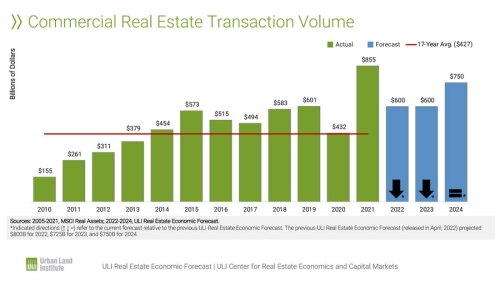When it comes to the e-commerce explosion, it’s all about “the last mile,” and almost anything is imaginable. “The last mile can be executed on foot, bicycle, hand cart, unicycle, skateboard, jetpack, Uber, Lyft—the list goes on,” said Benjamin Conwell of Cushman & Wakefield, a former director of Amazon’s North American real estate operations, speaking at the 2016 ULI Fall Meeting.
But the last mile—or kilometer—is the most challenging for e-retailers. “No one makes money on the last mile; it’s about minimizing losses,” Conwell told attendees. “Whoever figures out last-mile delivery without losing their shirts will be heroes in this space.” The last mile is defined as the last point of distribution or sorting of pre-ordered merchandise to the final destination of a home or business.
Global online sales are poised to top $2 trillion by the end of 2016, up from less than $1 trillion in 2011, and grow by 150 percent by the end of the decade, said Chris Caton of Prologis. And even though e-commerce sales still represent less than 10 percent of total U.S. retail sales, the rapidly evolving industry’s need for warehousing and logistics space is already having an impact in local real estate markets. E-commerce now accounts for 15 to 20 percent of new retail leasing, up from less than 5 percent five years ago, he noted. Vacancy rates are at 35-year lows, and rents are going up.
Logistics used to be out-of-sight, out-of-mind for retailers, Caton explained. Warehouses and distribution centers were developed in remote locations to take advantage of low land and labor costs. But to meet the demands of e-commerce, retailers need logistics facilities located close to population centers that facilitate speedy last-mile delivery and minimize transportation costs. Over the next few years, multiple new e-commerce staging centers and hundreds of localized delivery facilities will be needed to support quick delivery options for e-commerce retailers to maintain a competitive edge and meet consumer expectations.
The term instant gratification used to be associated with immaturity and selfishness; today, however, it is driving a retail revolution in providing goods almost instantaneously. So it’s no surprise that Amazon used the word NOW in launching its special delivery service for subscription customers: Amazon Prime NOW. Operating in select large cities—at least for now—this service offers free two-hour delivery of over 25,000 items across 25 categories, including household items, groceries, electronics, gifts, seasonal items, and more. Prime customers can get free one-hour deliveries from local restaurants in 19 markets.
In a related move, Amazon has also launched Logistics By Amazon (LBA) to control its entire supply chain. “Amazon is a logistics company that sells stuff,” said Conwell, noting that the company is investing in trucks, airplanes, and technology including robotics, as well as contracting with local delivery companies to bolster its last-mile delivery capabilities.
To support this growth, Conwell went on, Amazon is expanding its industrial real estate footprint. The company opened 28 sorting centers, 59 delivery stations, and 65 Prime NOW hubs just during the last year. Last-mile centers are smaller fulfillment centers in dense urban areas, he explained, filled only with Amazon’s best-selling items. They are often developed on vacant land or in closed big-box stores.
But it’s not all about Amazon, interjected Caton. Amazon controls only about 12 percent of U.S. online retail sales, while major bricks-and-mortar retailers control 40 percent and mid-size retailers have 47 percent of the pie. Competitors for American’s online dollars include not only megabrands like Amazon and Walmart, but also new entrants such as Wayfair. At chains like Target, Home Depot, and Sears, 30 to 70 percent of online orders are picked up in stores.
Online retailers in the United States are experimenting with a variety of formats and taking lessons from the United Kingdom and Asia, which outpace the United States in e-commerce. The panoply of last-mile options includes lockers and drop-off/pick-up centers such as convenience stores, gas stations, and transit hubs; shared retailer curbside delivery; direct delivery to customers’ cars; and even delivery to refrigerators. Haven’t heard of UberRUSH, Instacart, ShopRunner, Postmates, Munchery, DoorDash, Shyp, Curbside, or Drizly? Chances are you will hear of these or other last-mile innovators as e-commerce continues to be, in Conwell’s words, “the biggest disruption in . . . ever.”


